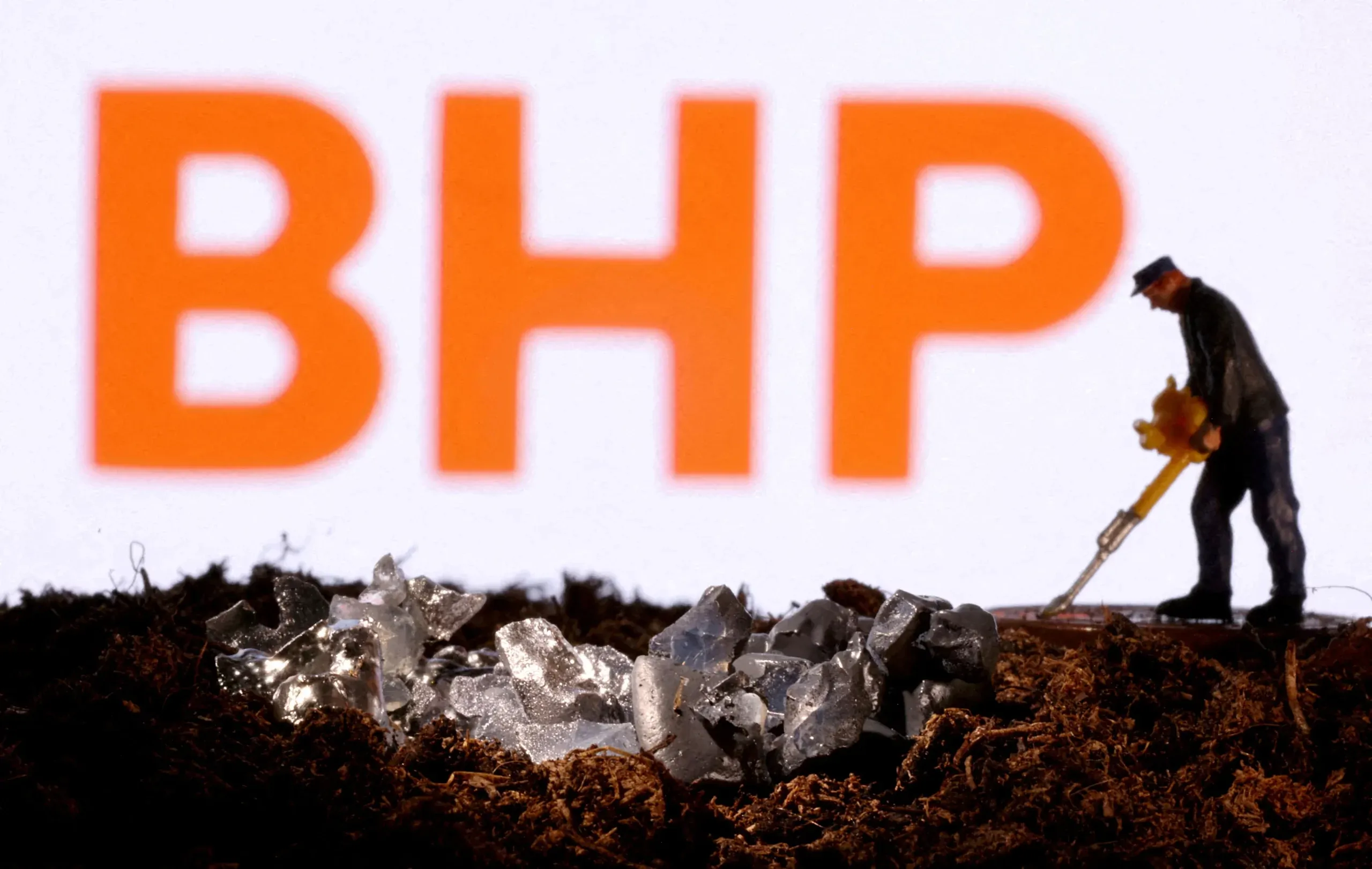
Miner BHP’s carbon emissions to rise slightly this year
By Melanie Burton
MELBOURNE (Reuters) -BHP Group’s operational carbon emissions are set for a “small increase” this financial year, an executive revealed on Wednesday, as the miner said its “non linear” path to net zero requires overcoming growth and technological challenges.
Still, the world’s largest listed miner is on track to cut those emissions by at least 30% by 2030, President for Climate Graham Winkelman told an investor briefing.
BHP has the least ambitious near-term target among the four biggest iron ore miners, with the most aggressive, Fortescue, aiming for zero operational emissions over the same time frame. Iron ore is primarily used to make steel.
BHP has earmarked $4 billion for operational carbon cuts by 2030. It had spent $122 million as at the end of its last fiscal year.
The miner is increasing the use of solar power, particularly at its Chilean copper operations, and decarbonising its trucking fleets over the medium term.
Emissions have climbed due to “organic growth”, Winkelman said. Miners must dig deeper to maintain production levels for ore that is falling in metal content. That means more activity per metric ton of mined metal, which raises diesel consumption.
The miner has been under pressure from investors to offer more detail on its carbon reduction plan, and to set a target for emissions reduction from customers. Steelmaking accounts for around 7% of global emissions.
“We expect that BHP will want to join peers like Rio Tinto in keeping pace with investor expectations to clearly disclose forward expenditure, technologies, timelines and the policies needed towards zero emissions steel,” said Naomi Hogan of the Australasian Centre for Corporate Responsibility.
BHP, which has said customer emissions are out of its control, aims to support the industry’s decarbonisation by developing technology and pathways capable of reducing emissions intensity by 30% by 2030.
Such technology includes a tie-up with top iron ore producer Rio Tinto to produce environment-friendlier green iron at Australia’s Port Kembla.
The miner also expects carbon capture, utilisation and storage (CCUS) to abate emissions from blast furnace steelmaking which uses its coking coal. CCUS is as yet unproven for such use at commercial scale.
Coking coal accounted for almost a fifth of BHP’s underlying profit in the last financial year and was a driver in its attempt to buy Anglo American in April.
BHP is also looking at ammonia-fuelled ships and at methane drainage before mining which could help cut methane emissions by as much as half at its Australian coal mines.
It has said it does not intend to rely on carbon offsets to reach its 2030 target. Still, CLSA analyst Baden Moore anticipates that BHP may need to build a carbon offset portfolio.
“Longer term, I think carbon offsets are going to be a feature for a lot of these high emissions portfolios where there are hard-to-abate sectors,” he said.
BHP’s Scope 3 or customer emissions last year stood at 370.5 million tons, around two-thirds of those of Rio Tinto. Its operational emissions stood at 9.8 million tonnes, around one third of Rio’s levels.
The miner is set to offer more details at its annual earnings briefing on Aug. 27.
(Reporting by Melanie Burton; Editing by Jamie Freed and Christopher Cushing)


